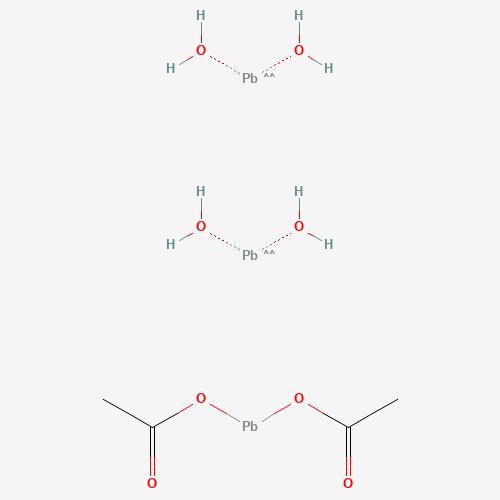- Product Details
Keywords
- POLY(VINYL ACETATE)
- PVAC
- CAS#9003-20-7
Quick Details
- ProName: POLY(VINYL ACETATE)/PVAC
- CasNo: 9003-20-7
- Molecular Formula: C4H6O2
- Appearance: white powder or granules
- Application: Industrial compound materials
- DeliveryTime: As soon as possible
- PackAge: As per customer's request
- Port: Any Chinese seaport
- ProductionCapacity: 1000 Metric Ton/Month
- Purity: 99.9%
- Storage: Room Temperature
- Transportation: By Air/By Sea/By Express
- LimitNum: 1 Metric Ton
- Molecular weight: 10,000-300,000
- softening temperature: 68-210°C
Superiority
Company Information
Henan Tianfu Chemical company was built in 2009 with an ISO certificate in the past 5 years, we have grown up as a famous fine chemicals supplier in china and we had established stable business relationships with samsung,lg,merck,thermo fisher scientific and so on.
Our Advantage:
1.higest quality and good package
2.fast delivery
3.better payment term
4.fast response to customer within 6 hours
5.good business credit in europe ,us ,japan ,korea
Our Products Classification:
• Industrial Chemicals
• Noble Metal Catalyst
• Electronic chemicals
• API & Intermediates
Solid/Powders: PE bag/Aluminum foil bag/Fiber can/plastic woven bag
Liquid: Fluorinated bottle/aluminum bottle/plastic drum
Details
| POLY(VINYL ACETATE) Basic information |
| Product Name: | POLY(VINYL ACETATE) |
| Synonyms: | POLY(VINYL ACETATE) USP;Vinyl acetate emulsion adhesive,series;Polyvinyl Acetate (1 g);Poly(vinyl acetate), approx. M.W. 170,000 500GR;Poly(vinyl acetate), approx. M.W. 170,000;Poly(vinyl acetate), approx. M.W. 100,000;Poly(vinyl acetate) 235;polysolps10 |
| CAS: | 9003-20-7 |
| MF: | C4H6O2 |
| MW: | 86.08924 |
| EINECS: | 203-545-4 |
| Product Categories: | Polymers;Hydrophobic Polymers;-;Materials Science;Polymer Science;Vinyl Esters |
| Mol File: | 9003-20-7.mol |
|
|
|
| POLY(VINYL ACETATE) Chemical Properties |
| Melting point | 60°C |
| density | 1.191 g/mL at 25 °C |
| refractive index |
n |
| Fp | >100℃ |
| storage temp. | 2-8°C |
| solubility | ketones, ethers and aromatic hydrocarbons: soluble |
| form | pellets |
| color | Clear |
| PH | 3.0-5.5 |
| Stability: | Stable. Incompatible with strong oxidizing agents, strong bases. Combustible. |
| Safety Information |
| Risk Statements | 45-46 |
| Safety Statements | 24/25 |
| WGK Germany | 3 |
| RTECS | AK0920000 |
| TSCA | Yes |
| HS Code | 39051900 |
| MSDS Information |
| Provider | Language |
|---|---|
| SigmaAldrich | English |
| ACROS | English |
| ALFA | English |
| POLY(VINYL ACETATE) Usage And Synthesis |
| Chemical Properties | transparent pellets or white powder |
| Chemical Properties |
The degree of polymerization of polyvinyl acetate typically is 100 to 5000. The ester groups of the polyvinyl acetate are sensitive to base hydrolysis and will slowly convert PVAc into polyvinyl alcohol and acetic acid. Under alkaline conditions, boron compounds such as boric acid or borax cause the polymer to cross-link, forming tackifying precipitates or slime. |
| History |
Polyvinyl acetate was discovered in Germany in 1912 by Fritz Klatte. The monomer, vinyl acetate, was first produced on an industrial scale by addition of acetic acid to acetylene with a mercury(I) salt[3] but it is now primarily made by palladium catalyzed oxidative addition of acetic acid to ethylene. |
| Uses |
As an emulsion in water, aPVAc emulsions are used as adhesives for porous materials, particularly for wood, paper, and cloth, and as a consolidant for porous building stone, in particular sandstone . Uses : As wood glue PVAc is known as "white glue" and the yellow "carpenter's glue" or PVA glue. As paper adhesive during paper packaging converting In bookbinding and book arts, due to its flexible strong bond and non-acidic nature (unlike many other polymers). The use of PVAC on the Archimedes Palimpsest during the 20th century greatly hindered the task of disbinding the book and preserving and imaging the pages in the early 21st century, in part because the glue was stronger than the parchment it held together. The stiff homopolymer PVAc, but mostly the more soft copolymer a combination of vinyl acetate and ethylene, vinyl acetate ethylene (VAE), is used also in paper coatings, paint and other industrial coatings, as binder in nonwovens in glass fibers. sanitary napkins, filter paper and in textile finishing PVAc can also be used as coating to protect cheese from fungi and humidity. Polyvinyl acetate is also the raw material to make other polymers like : Polyvinyl alcohol -[HOCHCH2]-: Polyvinyl acetate is partially or completely hydrolysed to give polyvinyl alcohol. This reversible saponification and esterification reaction was a strong hint for Hermann Staudinger in the formulation of his theory of macro molecules. Polyvinyl acetate phthalate (PVAP): Polyvinyl acetate is partially hydrolyzed and then esterified with phthalic acid. |
| Uses | drug delivery, hemodynamics, wound dressing, coatings |
| Definition | ChEBI: A polymer composed of repeating acetoxyethylene units. |
| Preparation | PVAc is a vinyl polymer. Polyvinyl acetate is prepared by polymerization of vinyl acetate monomer (free radical vinyl polymerization of the monomer vinyl acetate). |
| Hazard | Questionable carcinogen. |
| Industrial uses |
Polyvinyl acetate is a leathery, colorless thermoplasticmaterial that softens at relatively lowtemperatures and that is relatively stable to lightand oxygen. The polymers are clear and noncrystalline.The chief applications of polyvinylacetate are as adhesives and binders for waterbasedor emulsion paints. Vinyl acetate is conveniently prepared bythe reaction of acetylene with acetic acid. |
| Safety Profile | Very low toxicity by ingestion. Questionable carcinogen. When heated to decomposition it emits acrid smoke and irritating fumes. See also ESTERS |
| Purification Methods | Precipitate it from acetone by addition of n-hexane. |
| POLY(VINYL ACETATE) Preparation Products And Raw materials |
| Preparation Products | latex paint |
| Raw materials | Benzoyl peroxide-->Ammonium persulfate-->Rosin-->Poly(ethylene)-->Vinyl acetate-->Poly(vinyl alcohol)-->Dibutyl phthalate |





 Assessedsupplier
Assessedsupplier




